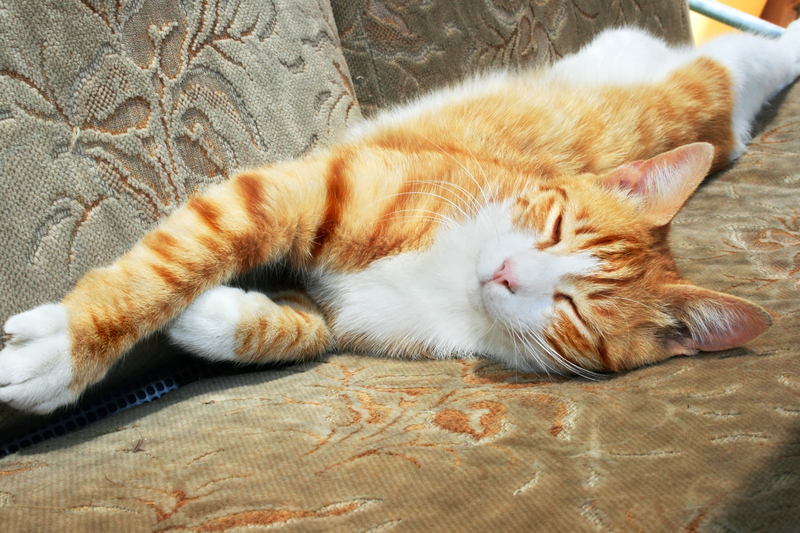Master the Art of Cleaning Burnt Residue from Your Stovetop
Posted on 02/10/2025
Master the Art of Cleaning Burnt Residue from Your Stovetop: The Ultimate Guide
Are you tired of staring at stubborn, burnt-on gunk, wondering how to clean burnt residue off your stovetop without damaging it? Welcome! You're about to become a pro at cleaning burnt stovetops, whether they're glass, ceramic, or traditional metal. This comprehensive guide will arm you with expert methods, safe home remedies, and must-know maintenance tips to keep your kitchen sparkling.
Understanding the Stovetop: Types & Cleaning Challenges
Before you tackle burnt residue, it's essential to understand your stovetop type. Each surface has unique cleaning requirements and limitations:
- Glass and Ceramic Stovetops: Popular for their sleek look, but prone to scratches and stubborn scorch marks.
- Gas Stoves with Metal Grates: Durable but can accumulate greasy buildup and burnt-on food around burners and grates.
- Electric Coil Stoves: Widely used, their coils trap drips and spills that quickly burn and cake onto surfaces.
Burnt-on residue isn't just unsightly--it can also be unhygienic and affect how efficiently your stovetop works. Mastering the art of cleaning burnt stovetops will make a big difference in your kitchen's overall cleanliness.

Essential Supplies for Cleaning Burnt Stovetops
*Preparation is the key to successfully cleaning off burnt residue from your stovetop.* Here are must-have items you should gather before getting started:
- Baking soda - a gentle, natural abrasive
- White vinegar - effectively dissolves stains and grease
- Non-scratch scrub sponge or soft cloth
- Plastic scraper or old credit card
- Dish soap
- Microfiber towel for polishing
- Gloves to protect your hands
- Paper towels
- Optional: Commercial stovetop cleaners, razor blade scraper (for glass/certain ceramic), lemon juice, and hydrogen peroxide.
Safety First: Read Your Manufacturer's Manual
Always check the cleaning instructions specific to your stovetop brand and model. Some materials and coatings are sensitive to certain chemicals or tools. If you're unsure, start with the gentlest method first.
Step-by-Step: How to Clean Burnt Residue from Your Stovetop
1. Let Things Cool Down
Never attempt to clean burnt-on messes while the stovetop is hot. Wait until your stovetop is completely cool to avoid burns and prevent further harm to the surface.
2. Remove Loose Debris
Wipe away any loose crumbs or spills with a damp cloth or paper towel. Detach grates on gas stoves or electric coils as needed to access the burnt residue.
3. Apply Baking Soda Paste
Mix equal parts baking soda and water to form a thick paste. Spread it generously over the burnt residue. The baking soda paste will help break down stubborn gunk without scratching your stovetop.
4. Let It Sit
Give the baking soda paste at least 15-30 minutes to penetrate the burnt mess. For severe build-up, let it sit even longer.
5. Scrub Gently
- Use a non-abrasive sponge or a soft cloth. Gently scrub the area in a circular motion.
- If you have a plastic scraper, use it carefully to lift the softened residue. Avoid metal tools--a razor blade can be used only if approved by your stovetop manufacturer (often safe with glass or thick ceramic).
6. Remove and Repeat (If Needed)
Wipe away the loosened residue with a damp microfiber towel. Repeat the process as needed for persistent stains.
7. Finishing Touch: Shine and Sanitize
Spritz the stovetop with vinegar to sanitize and dissolve any lingering soap or baking soda haze. Buff dry with a clean microfiber cloth for a streak-free finish.
Special Techniques for Cleaning Tough Burnt-On Stains
For Glass and Ceramic Stovetops
- Commercial Glass Stove Cleaner: These solutions are formulated to safely dissolve tough burnt residue without scratching delicate surfaces.
- Razor Blade Trick: Hold the blade at a 45-degree angle and gently scrape. Always move along the surface, not against it. Only use this technique if your stove manufacturer recommends it!
- Hydrogen Peroxide Boost: Combine hydrogen peroxide with baking soda for extra cleaning power against caked-on grime. Let it sit before scraping and wiping.
For Gas Stovetops
- Remove Grates and Burner Caps: Soak them in hot, soapy water for at least 30 minutes. Use a scrub brush and, if needed, a paste of baking soda for stubborn spots.
- Address Drip Pans: Remove drip pans and treat heavy scorch marks with a paste of baking soda and vinegar for powerful fizzing action. Let it soak, then scrub and rinse.
For Electric Coil Stoves
- Detach Coils (if safe): Never immerse coils in water! Instead, wipe gently with a damp cloth. For the drip pans, soak and scrub as described above.
- For Extreme Build-Up: Lay a towel soaked in hot, soapy water over the worst areas, let it sit for a while, and then proceed with baking soda paste.
Home Remedies for Burnt Stovetop Residue
Lemon Juice Solution
The natural acidity of lemon juice helps break down burned food and grease:
- Squeeze fresh lemon juice over the burnt area.
- Let it sit for 10-15 minutes.
- Scrub with a microfiber cloth, rinse, and wipe dry.
White Vinegar Power
Spray undiluted white vinegar on burnt-on stains, especially on glass or ceramic cooktops. Let it soak and break down grime before scrubbing gently.
Salt and Baking Soda Scrub
For particularly stubborn residue, sprinkle a mix of salt and baking soda onto the stovetop, then use a damp cloth or sponge to scrub.
Pro Tips to Prevent Burnt-On Messes
- Wipe Spills Immediately: Clean up food spills before they have a chance to dry and burn onto your stovetop.
- Use Drip Pans and Stove Protectors: These catch drips and make cleanup a breeze.
- Cook on Medium or Low Heat Whenever Possible: High heat increases the risk of spills burning onto your cooktop.
- Deep Clean Weekly: Don't wait for burnt-on stains to accumulate. Regular deep cleaning prevents tough build-up.
- Always Use the Right Tools: Avoid abrasive pads and harsh chemicals that can etch or scratch your stove's surface.
Best Products for Cleaning Stovetop Burnt Residue
- Weiman Cooktop Cleaner: Highly rated for glass and ceramic stove tops.
- Barkeepers Friend: Effective for stainless steel and tough burnt marks.
- Magic Eraser: Great for light to moderate stains (test on a small area first).
- Commercial Degreasers: Ideal for heavy greasy residue on gas stoves.
- Stove Scraper Tools: Specially designed blades or plastic scrapers for persistent burnt-on grime.
No matter which product you choose, always follow manufacturer instructions and test on a small, inconspicuous area first.
Common Mistakes to Avoid When Cleaning Burnt Stovetops
- Using Steel Wool or Metal Scrapers: These can cause permanent scratches or even crack glass cooktops.
- Applying Excessive Force: Hard scrubbing can damage your stove's finish. Be patient--a gentle approach is often more effective!
- Forgetting to Rinse: Soap or cleaner residue can make food stick more easily next time. Always rinse and buff dry.
- Skipping Regular Maintenance: Waiting until grime builds up will only make future cleaning harder.
FAQs: Cleaning Burnt Residue from Stovetops
How often should I clean my stovetop?
A light daily wipe and a deep clean once a week are ideal for a spotless, burn-free stovetop.
Is it safe to use a razor scraper on glass stovetops?
Only if your stovetop manufacturer allows it. Always use a specific cooktop scraper and delicate touch to avoid scratching the glass.
Can I use bleach to clean burnt residue?
Bleach is not recommended. It can damage or discolor stove surfaces and may react dangerously with other cleaning agents.
What if burnt residue won't come off?
Repeat the baking soda or vinegar methods, or use a commercial cleaner as directed. For the most stubborn stains, consult your appliance's manual or contact a professional.

Maintain the Shine: Long-Term Stovetop Care
- Clean Regularly: Consistent upkeep makes burnt-on residue less likely to become a big problem.
- Polish Glass/Ceramic Cooktops: Use cooktop polish after cleaning for extra shine and to prevent future stains.
- Protect Burners and Grates: Reassemble only after all parts are dry to prevent rust and sticking.
- Inspect for Wear: Watch for cracks or worn surfaces that may need professional repair.
Conclusion: Your Sparkling, Burnt-Free Stovetop Awaits!
Mastering the art of cleaning burnt residue from your stovetop is all about using the right methods, the proper cleaning products, and maintaining a regular schedule. Whether you're dealing with an everyday spill or a stubborn, burnt-on mess that just won't budge, these tips and tricks will help restore your stovetop's shine--without stress or damage.
Remember: A clean, burn-free stovetop means a healthier, more inviting kitchen for you and your loved ones.
Related Resources:
Ready to enjoy your sparkling stovetop? Grab your supplies and put these expert techniques into action today!





